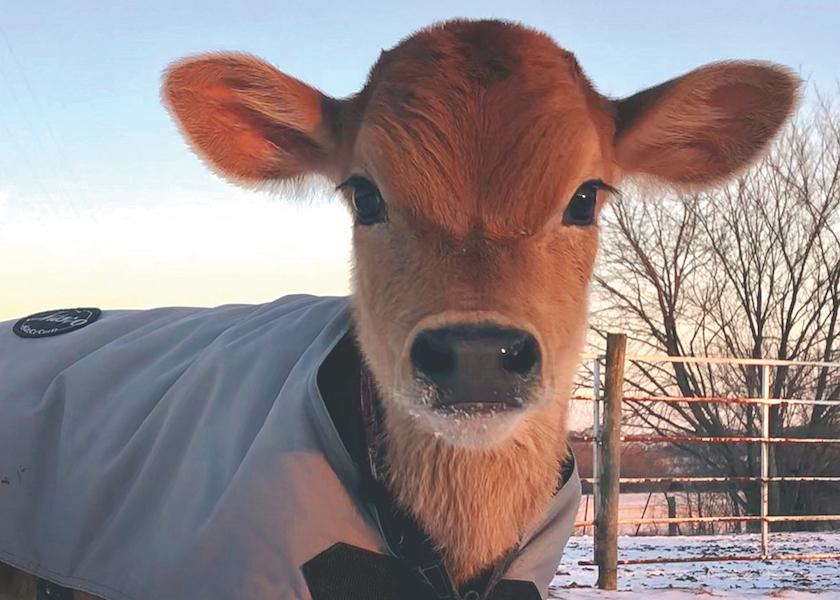Winter Calf Nutrition Needs Extra Attention

Winter can be an unpleasant season for both man and beast, but young dairy calves are especially susceptible to the extra burdens brought on by cold weather.
Maurice L. Eastridge, Professor and Extension Dairy Specialist at The Ohio State University, said because calves have a higher proportion of external body surface area compared to adult animals, they need to expend more energy by proportion to regulate their body temperature.
“The lower critical temperature for newborn calves is 48°F, versus 32°F for older calves,” he noted. “Without nutritional supplementation, that shift in energy allocation can happen at the expense of growth and immune-system support.”
As a result, calves can have slower growth or even lose weight in cold conditions. They also may become sick more frequently or even die due to cold stress. Among his suggestions for
Managing Dairy Calves and Heifers During the Winter Months, Eastridge suggested the following possible strategies to boost nutritional accommodations for preweaned calves headed into winter:
- If milk replacer is being fed, it should contain at least 20% fat.
- The solids content of the liquid from milk replacer can be increased from 12.5% to 16% (from 17 to 22 oz. of powder per gallon).
- Increase the feedings per day from two to three times, while holding the amount per feeding the same.
- Feed more milk per feeding, e.g., increase from 2 to 3 quarts two times a day.
- Use a combination of these strategies so that small-breed calves consume at least 1.3 lb. of dry matter (DM) and 0.3 lb. of fat per day. Large-breed calves should consume 2.0 lb. DM and 0.5 lb. fat per day. (Milk replacer powder is approximately 95% DM; whole milk is 13% DM).
“These strategies should be used while also offering a high-quality calf starter free choice and plenty of fresh water,” said Eastridge. “Water can certainly be a limiting nutrient during the winter months due to freezing or the calf feeder not offering adequate amounts.”
In addition to boosting nutrition, Eastridge said calves need additional support to prevent dramatic heat loss, or hypothermia. Those measures include blocking hutches from severe wind drafts; bedding young calves with deep, dry, organic bedding (preferably straw); and using clean, dry calf jackets on every animal.







